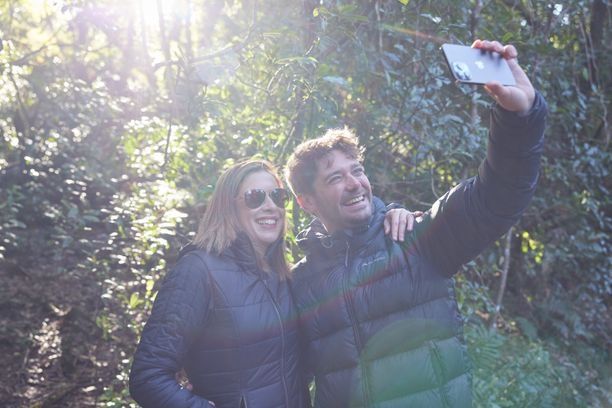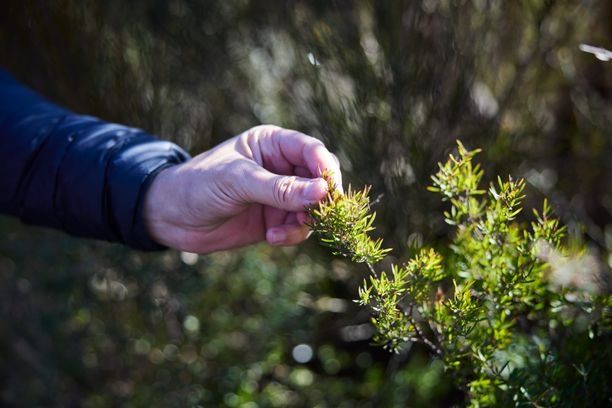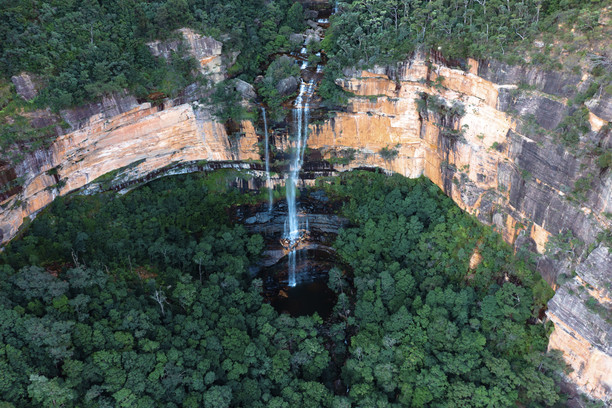The best time to visit the Blue Mountains is during spring (September to November) and autumn (March to May) when the weather is mild, and the landscapes are vibrant. In autumn you’ll find the changing colours of the leaves create a picturesque backdrop, making it perfect for hikes and scenic views. Spring offers the most comfortable conditions to fully enjoy the natural beauty of the region.
Spring (September to November): A Burst of Colour and Life
Spring in the Blue Mountains is a season of renewal, with wildflowers blooming and lush greenery everywhere. Villages like Leura and Blackheath showcase their gardens in full bloom, attracting visitors from around the world. The Leura Garden Festival, held annually in October, is a highlight. During spring, the mild temperatures make it ideal for outdoor activities such as hiking and exploring the numerous walking trails that wind through the mountains. On a Diamond Tours trip, your guide can point out the best spots for catching these seasonal displays and provide local insights that make the experience even richer.

Autumn (March to May): Nature’s Canvas
Autumn transforms the Blue Mountains into a vibrant display of reds, oranges, and yellows as the leaves change. This season is perfect for scenic drives, with roads lined by trees in full autumn splendour. The Everglades Historic House and Gardens in Leura offer spectacular views of the foliage, while the Blue Mountains Botanic Garden at Mount Tomah showcases the full spectrum of autumn colours. The cooler weather in autumn is ideal for hiking, providing breathtaking views of the landscape.

Summer (December to February): Warm Days and Cool Evenings
Summer in the Blue Mountains brings warmer weather, ideal for outdoor adventures like canyoning, abseiling, and exploring waterfalls. However, the higher temperatures mean it’s best to plan more challenging hikes for the early morning or late afternoon. The evenings are typically cooler, offering a pleasant contrast to the daytime warmth. Summer is also the time for festivals and outdoor events, adding a lively atmosphere to the region.

Winter (June to August): A Cosy Escape
Winter in the Blue Mountains is characterised by crisp air and mist-covered landscapes. The villages have a unique charm during this time, with wood-burning fireplaces in cafés and restaurants providing warmth and comfort. Winter is perfect for visiting the Jenolan Caves, where the underground temperatures remain constant year-round. It’s also a great time for scenic drives to lookouts, where you might catch a glimpse of snow-dusted mountains. The region’s food and wine scene comes into its own during winter, offering hearty meals and local wines to enjoy after a day of exploring.

Experience the Blue Mountains Year-Round
No matter the season, the Blue Mountains offer something unique for every traveller. From the vibrant colours of autumn to the fresh blooms of spring, and from the warm days of summer to the cosy retreats of winter, each season brings its own distinct appeal to this World Heritage-listed region.
While you can explore the Blue Mountains on your own, guided tours can enhance your experience, providing insights and access to hidden gems that you might otherwise miss. Whether it’s your first visit or you’re returning to discover more, the Blue Mountains are sure to leave a lasting impression, no matter when you choose to visit.
The entire day was an absolute joy. From start to finish. – Zabby Reid, Google Review, May 2024